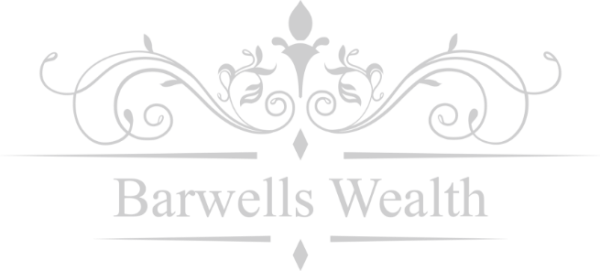
Global equities gained in July, with developed markets outperforming emerging economies. There was a rotation in the market with the value style significantly outperforming growth while small caps performed strongly. Government bond yields fell (meaning prices rose) across major markets as inflationary pressures eased.
US
US shares gained in July but there were some sharp rotations within the market. Investors moved out of growth companies (those with strong future growth potential) and instead favoured more lowly valued companies. Smaller companies outperformed larger ones.
At the very end of the month, the Federal Reserve (Fed) held interest rates steady at 5.25% – 5.5% but indicated that a cut could come at the next meeting in September. Softer inflation readings raised expectations that there will be at least one rate cut this year.
According to the Consumer Prices Index (CPI), annual inflation was 3% in June, down from 3.3% in May. A separate measure of inflation, the Personal Consumption Expenditures Index, declined to 2.5% in the year to June, down from 2.6% in May. Elsewhere, data showed the US economy grew at a 2.8% annualised rate in Q2.
Top-gaining sectors for the month included real estate, utilities, and financials. Smaller companies also performed well amid expectations that they will benefit from any fall in interest rates.
The information technology and consumer discretionary sectors fell with declines for some of the mega-cap companies that have powered the US market’s gains in recent years. There were concerns over whether the scale of investment into themes such as Artificial Intelligence (AI) will be matched by returns.
Elsewhere, president Joe Biden withdrew from this year’s presidential race and endorsed vice president Kamala Harris as the Democratic nominee instead.
Eurozone
Eurozone shares notched up a small advance in July amid gains for the healthcare, utilities, and real estate sectors. There were negative returns for the consumer discretionary and information technology sectors.
Some strong quarterly earnings and positive clinical readouts helped to support stocks in the healthcare sector. Meanwhile, weak consumer demand weighed on the luxury goods and automotive segments within the consumer discretionary sector. The information technology sector was affected by a rotation out of growth stocks and worries that the US might seek to impose further restrictions on what semiconductor equipment can be sold to China.
Data showed that eurozone Gross Domestic Product (GDP) growth was 0.3% quarter-on-quarter in Q2 2024. However, Germany saw a 0.1% fall in GDP. Meanwhile, euro area annual inflation for July was estimated at 2.6%, up from 2.5% in June. At its July meeting, the European Central Bank (ECB) kept interest rates on hold, as expected. ECB governor Christine Lagarde said a decision on a possible cut in September was “wide open” and dependent on incoming data. The flash eurozone Purchasing Managers’ Index (PMI) indicated that the eurozone economy was near stagnation with a reading of 50.1, down from 50.9 in June. PMI data is based on surveys of companies in the manufacturing and service sectors. A reading above 50 indicates growth while below 50 indicates contraction.
Meanwhile, the French parliamentary election concluded with no political grouping achieving an outright majority.
UK
UK equities performed well as a landslide Labour general election win at the start of the month helped fuel hopes for a sustained recovery in the domestic economy. This occurred as expectations built for a cut in UK interest rates as it was revealed that annual CPI inflation held steady at 2% in June.
Business confidence picked up sharply in July and PMIs for both the services and manufacturing sectors suggested the recovery in UK GDP data for May had continued into the summer. Domestically focussed UK small- and mid-cap equities, in particular, performed very well as a result.
The FTSE 250 ex-investment trust index rose by 8% over the month, while the largest domestically focussed housebuilding, retail, and banking stocks helped contribute to gains in the FTSE 100. The FTSE 100 rose by 2.5% despite the headwinds of a strong currency potentially affecting the sterling value of its predominately overseas earnings.
The positive economic news built over the month with S&P Global’s manufacturing PMI rising to 52.1 in July (ahead of market expectations), its highest reading in two years. Meanwhile the S&P’s services PMI rose to 52.5, from 52.1 in June.
This added to evidence that the new UK government’s focus on growth and stability had fed through into corporate confidence. Deloitte’s latest quarterly survey of UK chief financial officers, covering the period 9 July to 19 July immediately following the 4 July election, revealed a sharp rise in risk appetite.
Reflecting an increase in revenue growth expectations and greater optimism about their companies’ financial prospects, 36% of chief financial officers said it was a good time to take on more risk. This represented the biggest month-on-month rise in risk appetite since 2021 when the UK was recovering from the pandemic-induced recession.
Japan
The Japanese equity market experienced high volatility during the month. It reached a historical high earlier in July but then corrected sharply. The TOPIX Total Return index registered a 0.5% decline. The currency market also experienced significant fluctuations, with a sharp appreciation of the yen. The yen strengthened from 162 yen to 150 yen against the US dollar by the end of July.
The significant swings appear to be caused by speculative activity, rather than by the development of corporate fundamentals. Japanese macroeconomic conditions also remained solid and the sharp shift in the Japanese yen seems to have been driven by short-term money.
The reversal of the previous yen weakness was triggered by the possible intervention of the Japanese government following the release of weak US CPI data, which indicated that the Fed might cut rates more sharply. On 31 July, the Bank of Japan raised its policy rate to 0.25% from 0% – 0.1%, which further supported the yen strength.
The yen appreciation and the rise in interest rates in Japan had an impact on trends in the Japanese equity market. The financial sector remained solid, and the construction and real estate sectors rose strongly too. Defensive sectors such as pharmaceuticals and foods also supported the market during the period of turbulence.
On the other hand, exporters such as autos, technology, and machinery were affected by the yen appreciation due to concerns about its negative impacts on their profits. Overall, small caps held up well and the value style continued to perform better than growth style.
Asia (ex-Japan)
Asia ex-Japan equities were almost unchanged in July. Thailand, Malaysia, and the Philippines were the best-performing markets in the MSCI AC Asia ex-Japan Index in July. Taiwan, China, and South Korea were the worst-performing index markets in the month.
Stocks in Taiwan were badly hit by the sell-off in technology stocks towards the end of the month, with AI stocks particularly affected. However, despite the monthly decline Taiwan remains the best-performing index market in the year-to-date period.
Chipmakers in South Korea were also weaker during the sell-off in technology stocks, with investors starting to question how the expansion in AI will benefit revenue. Major surprises in the US presidential election campaign and the timing of an interest rate cut by the US central bank also weakened investor sentiment in the month.
Equity markets in India, Indonesia, and Singapore also achieved modest gains in the month. Healthcare was the strongest sector in the month, while semiconductor makers experienced the sharpest price falls.
Emerging markets
Emerging market (EM) equities gained in US dollar terms in July but lagged developed markets. EM returns were supported by a weaker dollar and hopes that US interest rates could be cut as soon as September given softer inflation data. However, poor performance from index heavyweights China and Taiwan proved a drag on the MSCI EM index.
Greece, UAE, and Egypt were the top performers over the month, with South Africa close behind, supported by ongoing strength in the gold price and optimism about the Government of National Unity. India outperformed, followed by Brazil while Mexico was just ahead of the EM index.
South Korea and Taiwan delivered negative returns amid a broader global sell-off of technology-related stocks, following months of strong performance from the sector. China was also down on uncertainty around the Third Plenum. The domestic economy remains weak and future policy support is unclear.
Turkey fell on currency weakness while a delay in expectations of the timing of the first interest rate cut weighed on returns in Poland.
Global bonds
July was a positive month for global bond markets. Government bond yields, which move inversely to bond prices, dropped across all major markets, propelled by expected interest rate cuts as inflationary pressures eased.
European corporate bond spreads tightened over the month, marking a notable outperformance over government bonds. Meanwhile US corporate bonds lagged, performing in line with Treasuries. High-yield credit had a positive month, supported by the prospect of lower interest rates. High-yield bonds are more speculative than their investment grade counterparts, with a credit rating below investment grade.
The potential start of a rate-cutting cycle, being crucial for bond markets, meant that central banks took centre stage once again. In the US, a second consecutive low core inflation print, and signs of slowing growth, provided enough reason for the US Fed to open the door for interest rate cuts at its September meeting. The Federal Open Market Committee (FOMC) met on the last day of July and, as was widely expected, interest rates were kept unchanged. However, Fed chair Jerome Powell steered the market towards a September rate cut, fuelling a rally in Treasuries.
Similarly, barring any major surprises in data, the ECB appeared to be gearing up for a September rate cut. The July flash release of eurozone core inflation was slightly more robust than anticipated, due to elevated goods prices. However, this did not alter the market’s expectations for rate cuts. European government bond markets performed well across the board. French government bonds recovered much of their previous losses following the second round of elections which unexpectedly resulted in a hung parliament. The ensuing political deadlock reassured investors that more extreme budgetary measures might be blocked.
UK gilts participated in the month’s rally as investors eagerly awaited the Bank of England’s announcement at the start of August. The market was split on whether the rate cut would occur at this meeting or the subsequent one in September. Meanwhile, the new Labour government revealed more details about its fiscal plans, including several public sector pay awards and some cost-saving initiatives. It also scheduled the Autumn Budget for 30 October.
In currency markets, the Japanese yen outperformed over the month. In contrast with other major central banks, the Bank of Japan raised interest rates to 0.25%. Sterling also had a positive month, boosted by better-than-expected growth.
Convertible bonds, as measured by the FTSE Global Focus index hedged in US dollars, ended the month with a gain of 1.5%. Overall, convertibles demonstrated good downside protection in the latter half of the month when equity markets faced pressure. The primary market for convertibles remained very active with $9 billion of interesting new paper coming to the market. There was good demand and liquidity for the new convertibles.
Commodities
The S&P GSCI Index fell in July. Industrial metals and agriculture were the weakest components of the index, while precious metals and livestock achieved modest price gains. In industrial metals, all sub-components ended the month in negative territory, with aluminium and zinc recording the sharpest price falls.
Within agriculture, the price of wheat, corn, soybeans, cotton, and sugar all declined, while coffee and cocoa achieved modest gains. Within energy, the price of natural gas was sharply lower in the month. In precious metals, gold prices were modestly higher while the price of silver fell.
Please note
The value of your investments (and any income from them) can go down as well as up and you may not get back the full amount you invested. Past performance is not a reliable indicator of future performance. Investments should be considered over the longer term and should fit in with your overall attitude to risk and financial circumstances.
This blog is for general information only and does not constitute advice. The information is aimed at retail clients only.







 Production
Production